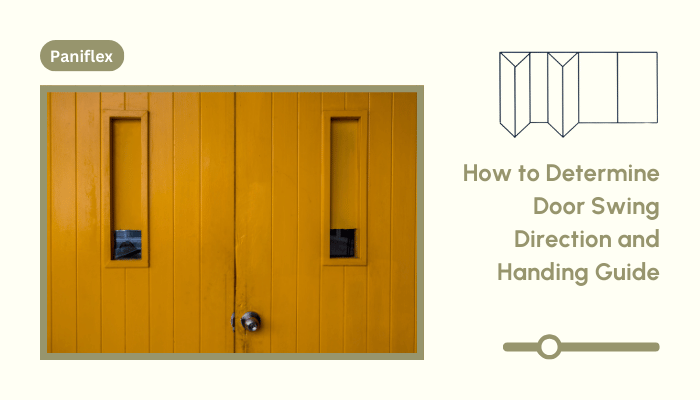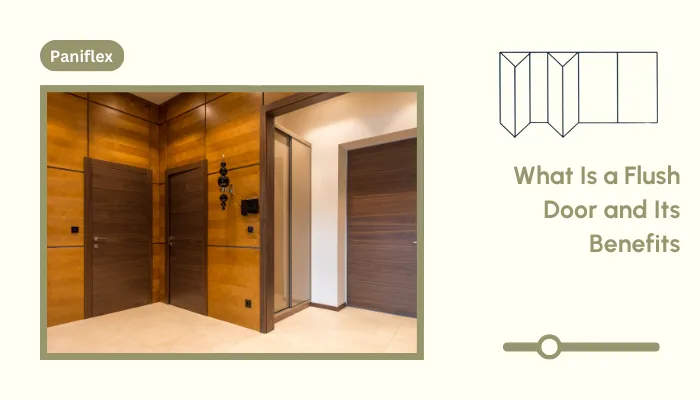As an interior designer or architect, understanding the intricacies of door swing direction and handing is crucial for creating functional and aesthetically pleasing spaces. Whether you’re working on a residential project or a commercial building, knowing how to determine door swing can make or break your design. In this comprehensive guide, we’ll walk you through the essentials of door swing and handling, ensuring you have the knowledge to make informed decisions for your clients.
Proper door swing and handing must be balanced. They affect a space’s aesthetics, functionality, safety, and compliance with building codes. A door that swings in the wrong direction can obstruct traffic flow, create awkward spaces, or even pose safety hazards in emergencies. By mastering this essential skill, you’ll elevate your design capabilities and ensure that every door in your projects enhances the overall user experience.
Understanding Door Swing and Handing
Before we dive into the specifics, let’s clarify what we mean by door swing and handing, along with related terms:
- Door swing: The direction in which a door opens and closes. This is a fundamental aspect of door design that influences the usability of a space.
- Door handing: Describes the side of the door where the hinges are located and how the door operates about the person opening it. Proper handing ensures that the door functions as intended within the space.
- Inswing: A door opens towards the inside of a room. Inswing doors are standard in residential settings and areas where space inside the room is not a concern.
- Outswing: A door opens towards the outside of a room. Outswing doors are often used in commercial settings or where interior space is limited.
- Active leaf: In double doors, the leaf that opens first or most frequently. This is typically the leaf that contains the primary locking mechanism.
- Inactive leaf: The secondary leaf in double doors often remains closed. It usually has bolts at the top and bottom to secure it when closed.
- Hinge stile: Hinges are attached to the vertical edge of the door. Understanding the hinge stile location is crucial for determining door handing.
- Lock stile: The lock is installed on the vertical edge of the door opposite the hinge stile. When the door is closed, this side typically faces the jamb.
Ready to experience the benefits of custom closet doors? Explore our range of Paniflex products now.
Understanding these terms is crucial for several reasons:
- Safety: Proper door swing ensures safe egress and complies with building codes. In emergencies, doors must swing toward exit travel to allow for quick evacuation.
- Functionality: It affects the space’s usability and furniture placement. A door swinging into a room may limit furniture placement options, while an outswing door might interfere with exterior traffic flow.
- Aesthetics: The right door swing can enhance a room’s flow and visual appeal. Consistent door swings throughout a space can create a sense of harmony and intentional design.
- Accessibility: Proper door handing is essential for compliance with accessibility standards, ensuring that spaces are usable by individuals with various mobility needs.
- Energy efficiency: In exterior applications, the direction of the door swing can impact the building’s energy efficiency. Inswing doors typically provide better weather-sealing, while outswing doors can be more resistant to forced entry.
Are you not quite sure yet? Don’t worry—we’ve got more practical steps coming up to make it all crystal clear.
Determining Door Handing for Single Doors
To determine the handing of a single door, follow these steps:
- Stand on the outside (secure side) of the door. This is typically the side from which you would enter the room or space.
- Identify the hinge location: Is it on the left or right? This is the most critical factor in determining door handing.
- Determine the swing direction: Does the door open inward or outward? This will help you distinguish between standard and reverse handing.
- Combine these factors to define the handing:
- Left Hand (LH): Hinges on left, opens inward
- Right Hand (RH): Hinges on the right, opens inward
- Left Hand Reverse (LHR): Hinges on the left, opens outward
- Right Hand Reverse (RHR): Hinges on the right, opens outward
Let’s break this down with some practical examples:
- Imagine you’re standing outside a bedroom. If the hinges are on your left and the door opens into the room, it’s a left-hand (LH) door.
- Now, picture a front door. If the hinges are on your right when you’re outside and the door opens outward, it’s a Right-Hand Reverse (RHR) door.
Pro Tip: When working with custom closet doors from Paniflex, understanding door handing ensures a perfect fit and seamless operation in your design projects. Their expert team can guide you through the selection process, ensuring that each door complements your overall design while functioning flawlessly.
Ready to experience the benefits of custom closet doors? Explore our range of Paniflex products now.
Ready to tackle door swing direction? Let’s break it down further.
Determining Door Swing Direction
Door swing direction is categorized as either inswing or outswing:
- Inswing Doors: Open towards the inside of the room. These are common in residential settings and offer several advantages:
- Better weather-sealing for exterior doors
- More accessible to close in windy conditions
- It can provide more interior design flexibility in some cases
- Outswing Doors: Open towards the outside of the room. These are often used in commercial settings and offer the following benefits:
- Save interior space
- It can be more secure against forced entry
- Required for some egress situations in commercial buildings
To verify the swing direction by checking hinge visibility:
- Stand on the pull side of the door (the side you’d pull to open it).
- If you can see the hinges, it’s an inswing door.
- If you can’t see the hinges, it’s an outswing door.
This method is beneficial when the door is closed, and you can’t open it to check the swing direction. It’s a quick and easy way to determine the swing direction without manipulating the door.
Consider these factors when deciding between inswing and outswing doors:
- Space constraints: Outswing doors can save interior space, making them ideal for small rooms or areas with limited clearance.
- Weather considerations: Inswing doors generally provide better weather-sealing for exterior doors, but outswing doors can be more resistant to wind pressure.
- Security: Outswing exterior doors can be more secure against forced entry, as the door frame supports the door against inward force.
- Building codes: Some jurisdictions have specific requirements for door swing direction, especially in commercial and public buildings. Always check local codes before finalizing your design.
- Accessibility: Consider how the door swing affects accessibility for individuals with mobility devices. Outswing doors can sometimes be easier to navigate for wheelchair users.
Got the basics down? Great, let’s move into double doors next.
Identifying Handing for Double Doors
Double doors add an extra layer of complexity to door handing. They’re often used in wider openings and can create a grand entrance or improve traffic flow in busy areas. Here’s how to determine their handing:
- Identify the active and inactive leaf (the door that opens first).
- Determine the hinge location and swing direction for each leaf.
- Combine these factors to define the handing:
- For the active leaf: Follow the single door handing process
- For the inactive leaf: Its handing will be opposite to the active leaf
Example:
- If the active leaf is Left Hand (LH), the inactive leaf will be Right Hand (RH)
- If the active leaf is Right Hand Reverse (RHR), the inactive leaf will be Left Hand Reverse (LHR)
Common double-door handing types include:
- Left Hand Active (LHA): Active leaf is LH, inactive leaf is RH
- Right Hand Active (RHA): Active leaf is RH, inactive leaf is LH
- Left Hand Reverse Active (LHRA): Active leaf is LHR, inactive leaf is RHR
- Right Hand Reverse Active (RHRA): Active leaf is RHR, inactive leaf is LHR
When working with double doors, consider these additional factors:
- Astragal: This strip of material covers the gap between the two door leaves when closed. It’s typically attached to the inactive leaf and helps with weather-sealing and security.
- Flush bolts: These are often installed on the inactive leaf to secure it to the frame at the top and bottom when closed.
- Coordinating hardware: Ensure that handles, locks, and other hardware are compatible with your chosen double door configuration.
- Traffic flow: Consider which leaf should be active based on the expected traffic patterns in the space.
Remember, Paniflex offers customizable double-door solutions tailored to your specific design needs, ensuring functionality and style. Their range of options allows you to create double doors that operate smoothly and enhance your space’s aesthetic appeal.
Now that you’re a pro at single and double doors, it’s time to tackle double egress doors.
Door Handing for Double Egress Openings
Double egress doors are designed to efficiently manage high traffic flow, allowing for smooth entry and exit, especially in commercial or public buildings. These doors are crucial in spaces where seamless movement of people in both directions is essential.
To determine handing for double egress doors:
- Identify the secure sides: Both are typically considered secure in double-egress configurations.
- Determine swing directions: Each leaf swings in opposite directions, allowing for simultaneous ingress and egress.
- Typical combinations include:
- Left Hand Reverse x Left Hand Reverse: Both doors swing outward; viewing their respective sides shows their hinges are on the left.
- Right Hand Reverse x Right Hand Reverse: Both doors swing outward; viewing their respective sides shows their hinges are on the right.
Example scenario: In a busy hospital corridor, double egress doors allow staff to move patients in both directions quickly without obstructing traffic flow. The doors swing away from approaching traffic on both sides, minimizing collisions and improving efficiency.
Key considerations for double egress doors:
- Building codes: Building codes often require double egress doors in certain high-traffic or emergency egress situations. Always consult local regulations when specifying these doors.
- Hardware: Specialized hardware is often required for double egress doors, including panic devices that allow for easy opening from either side.
- Clearance: Ensure adequate clearance on both sides of the door to accommodate the swing and traffic flow.
- Signage: Proper signage is crucial to indicate the direction of the swing and guide users, especially in emergencies.
- Maintenance: Regular maintenance is essential to ensure the smooth operation of both door leaves, as a malfunction could significantly impede traffic flow or compromise safety.
Remember the special considerations that can impact your project’s success. Let’s dive into those.
Special Considerations
As you work on your projects, keep these special considerations in mind:
- Verify manufacturer-specific terminology: Different manufacturers may use slightly different terms. For instance, Paniflex uses specific terminology for their custom closet doors, which may differ from standard architectural terms. Always consult their product guides for accurate specifications. This ensures that you get exactly what your design requires when you order doors or hardware.
- Handling different lever directions:
- For inswing doors: The lever typically points towards the hinges.
- For outswing doors: The lever usually points away from the hinges.
- Consider universal levers that can be installed in either direction for flexibility.
- Lever direction can significantly impact the ergonomics and usability of a door. For example, a lever pointing in the wrong direction might be awkward to operate or could catch on clothing.
- Using circular knobs for reversible handling:
- Circular knobs offer the advantage of being symmetrical, allowing for easy reversal of door swing without changing hardware.
- This can be particularly useful in situations where door swing might need to be changed in the future, such as in adaptable living spaces or commercial environments.
- While levers are generally more accessible, knobs can provide design flexibility and are less affected by door handing changes.
- Consider the impact of door thickness:
- Door thickness can affect the choice of hardware and the overall appearance of the installation.
- Ensure that your chosen hardware is compatible with the door thickness specified in your design.
- Pocket doors and sliding doors:
- While these door types don’t have traditional handing, they do require careful consideration of track placement and hardware selection.
- For pocket doors, determine which side the door will retract into. For sliding doors, decide whether they will be left-opening or right-opening.
- ADA compliance:
- When designing for accessibility, door swing and hardware selection are critical.
- Ensure that door widths, clear floor space, and hardware meet ADA guidelines for accessible design.
- Fire-rated doors:
- Fire-rated doors often have specific requirements for handing and hardware.
- Consult with fire safety experts to ensure your door specifications meet all necessary fire code requirements.
And that brings us to the end of our guide. Let’s wrap it up!
Ready to experience the benefits of custom closet doors? Explore our range of Paniflex products now.
Conclusion
Mastering the art of determining door swing direction and handing is an essential skill for interior designers and architects. By understanding these concepts, you’ll ensure that your designs are beautiful but also functional and code-compliant. Accurate door installation is crucial for safety, aesthetics, and the overall success of your projects.
Remember these key takeaways:
- Door handing is determined by hinge location and swing direction.
- Always consider the context of the door’s use when specifying swing direction.
- Double and egress doors require special attention to active and inactive leafs.
- Manufacturer-specific terminology may vary, so always verify specifications.
- Visual aids and diagrams are invaluable tools for understanding and communicating door handing.
As you apply this knowledge to your projects, proper door specification will become second nature, enhancing the overall quality and functionality of your designs. Whether you’re working on a residential renovation or a large commercial project, your expertise in door swing and handing will contribute to safe, efficient, and aesthetically pleasing spaces. Remember, when working on custom door projects, Paniflex supports you with a wide range of customizable options and expert guidance. Their team can help you navigate the complexities of door swing and handing, ensuring your vision comes to life seamlessly. From sleek bifold doors to elegant sliding solutions, Paniflex offers the versatility and quality to elevate your designs.






